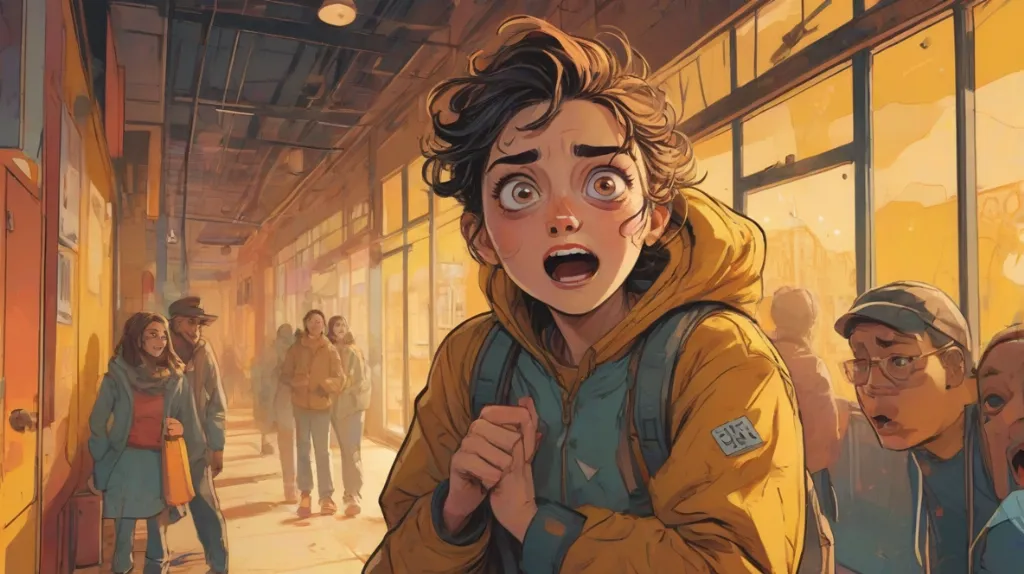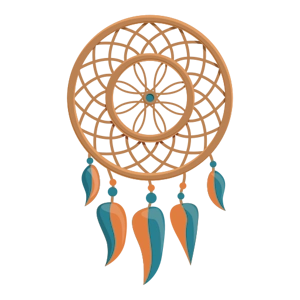What Does It Mean to Dream of Dread ?
Posted on: November 3, 2024
Last updated: February 19, 2025
Dread symbolizes deep-seated fears and anxieties, often reflecting significant life changes or challenges. It serves as a warning or call to action, urging individuals to confront their fears. This emotion can indicate feelings of helplessness and a lack of control, while also presenting an opportunity for personal growth and self-discovery.

What does Dread mean in a dream?
Dread in dreams often serves as a powerful indicator of underlying fears and anxieties that may be lurking in the subconscious. This emotion can manifest in various forms, from a sense of impending doom to a more generalized feeling of unease. Understanding the significance of dread in the context of a dream book can provide valuable insights into one’s emotional state and current life circumstances. It is essential to explore the specific situations and feelings associated with the dread to unlock its true meaning.
Moreover, the experience of dread in dreams can be linked to significant life changes or challenges that one may be facing. Such dreams may act as a warning or a call to action, urging the dreamer to confront their fears head-on. The symbolism of dread can also reflect feelings of helplessness or a lack of control over certain aspects of life. This emotional response can be a catalyst for personal growth and self-discovery.
In a dream book, dread is often associated with various connotations that can help in interpreting its meaning. Some of these include:
- Fear of the unknown
- Anticipation of failure
- Feeling overwhelmed by responsibilities
- Unresolved conflicts
Ultimately, recognizing the presence of dread in dreams can be a crucial step toward addressing deeper emotional issues. By analyzing the context and emotions surrounding the dream, one can begin to unravel the layers of meaning behind this intense feeling. Embracing the messages conveyed through dreams can lead to a greater understanding of oneself and the challenges that lie ahead.
Meaning in dream books
Repressed Emotions
In psychoanalysis, dread often points to repressed emotions or fears that have not been addressed. It serves as a signal from the subconscious, urging the dreamer to explore and process these buried feelings to achieve emotional balance.
Conflict and Anxiety
Dread can also reflect inner conflict and anxiety. It may indicate that the dreamer is grappling with opposing desires or unresolved conflicts, leading to feelings of dread as a manifestation of psychological tension.
Self-Reflection and Awareness
Lastly, experiencing dread in dreams can prompt self-reflection and awareness. It encourages individuals to examine their fears and anxieties, fostering a deeper understanding of themselves and their emotional landscape.
Fear of the Unknown
The appearance of dread in dreams often symbolizes a fear of the unknown. This feeling can arise from unresolved issues or uncertainties in waking life. It serves as a reminder to confront hidden fears and embrace the mysteries of life.
Intuition and Warning
Dread can also represent a strong intuitive warning. When this emotion surfaces in dreams, it may indicate that something is amiss in your life, urging you to pay attention to your instincts and safeguard yourself from potential dangers.
Transformation and Growth
Finally, dread can signify a catalyst for transformation. Experiencing this emotion in dreams may suggest that you are on the brink of significant change. While it may be uncomfortable, it often precedes personal growth and the shedding of old patterns.
Dread in different cultural contexts in dreams
In the realm of dream interpretation, the concept of dread resonates deeply across various cultures, reflecting universal fears and anxieties. In Western culture, dread often symbolizes the subconscious mind grappling with the unknown. It can manifest as a response to societal pressures, personal insecurities, or existential crises. The portrayal of dread in dreams serves as a mirror, revealing the internal struggles that many face in a fast-paced, achievement-oriented society. The Western narrative often emphasizes overcoming these fears, suggesting that confronting dread can lead to personal growth and empowerment.
In Slavic traditions, dread is often intertwined with folklore and mythology. Dreams featuring dread may be seen as omens or warnings, urging individuals to heed the messages from their ancestors or the spirit world. The Slavic perspective tends to view dread not merely as a negative experience but as a necessary part of life’s journey, guiding individuals toward self-awareness and resilience. This cultural lens encourages the belief that embracing dread can lead to profound insights and a deeper connection to one’s roots.
Eastern philosophies, particularly in Buddhism, interpret dread through the lens of impermanence and the nature of suffering. Here, dread in dreams can signify attachment to worldly desires and the fear of loss. The dreamer is encouraged to confront these feelings, understanding that dread is a natural response to the transient nature of life. This perspective promotes mindfulness and acceptance, suggesting that by recognizing and embracing dread, individuals can achieve a state of inner peace and enlightenment.
In Oriental cultures, dread can be linked to the concept of yin and yang, representing the balance of light and dark forces within oneself. Dreams that evoke dread may symbolize the struggle between these opposing energies, prompting the dreamer to seek harmony. The interpretation of dread in this context encourages individuals to explore their fears and anxieties as a pathway to understanding their true selves. By acknowledging the presence of dread, one can embark on a transformative journey toward self-discovery and balance.
Dread in other contexts of use
Dread of Losing Control
This context reflects a fear of being unable to manage one’s life or emotions, often manifesting in dreams where the dreamer feels overwhelmed by circumstances.
Dread of Failure
In this scenario, the dreamer experiences anxiety about not meeting expectations, whether personal or professional, leading to feelings of inadequacy.
Dread of the Unknown
This symbolizes fear of uncertainty and what lies ahead, often represented by dark or mysterious settings in dreams.
Dread of Judgment
Here, the dreamer fears being criticized or evaluated by others, which can lead to feelings of vulnerability and insecurity.
Dread of Abandonment
This context highlights fears of being left alone or unsupported, often linked to past experiences of loss or betrayal.
Dread of Confrontation
In this case, the dreamer may be avoiding conflict in waking life, leading to dreams filled with anxiety about facing difficult conversations.
Dread of Change
This reflects a resistance to transformation, where the dreamer feels anxious about new beginnings or shifts in their life.
Dread of Illness
This context represents fears related to health and well-being, often manifesting as nightmares about sickness or injury.
Dread of Losing Loved Ones
Here, the dreamer experiences anxiety about the safety and well-being of those they care about, reflecting deep emotional connections.
Dread of Inadequacy
This symbolizes feelings of not being enough, whether in relationships, work, or personal goals, leading to self-doubt.
Dread of Isolation
This context highlights fears of being alone or disconnected from others, often represented by desolate or empty dreamscapes.
Dread of Natural Disasters
This reflects fears of uncontrollable events, symbolizing anxiety about external chaos affecting one’s life.
Dread of Rejection
In this scenario, the dreamer fears being turned away or not accepted by peers, leading to feelings of loneliness.
Dread of Responsibility
This context emphasizes anxiety about the weight of obligations and duties, often leading to feelings of being overwhelmed.
Dread of Financial Instability
This symbolizes fears related to money and security, often manifesting in dreams of losing possessions or resources.
Dread of Aging
This reflects anxieties about growing older, often represented by themes of decay or loss of vitality in dreams.
Dread of Failure to Protect
Here, the dreamer fears not being able to safeguard loved ones or themselves, leading to feelings of helplessness.
Dread of Betrayal
This context highlights fears of being deceived or let down by those close to the dreamer, often linked to past traumas.
Dread of the Past
This symbolizes unresolved issues or regrets that haunt the dreamer, often manifesting as nightmares about previous experiences.
Dread of Public Speaking
In this scenario, the dreamer experiences anxiety about performing or speaking in front of others, reflecting fears of exposure.
Dread of Losing Identity
This context reflects fears of being forgotten or losing one’s sense of self, often represented by themes of anonymity in dreams.
Dread of Technology
This symbolizes anxieties about the rapid pace of technological change and its impact on personal life and relationships.
Dread of the Future
Here, the dreamer feels apprehensive about what lies ahead, often represented by dark or foreboding imagery.
Dread of Conformity
This context emphasizes fears of losing individuality and being pressured to fit in with societal norms.
Dread of Being Trapped
This symbolizes feelings of confinement or restriction in life, often manifesting as dreams of being unable to escape.
Dread of Losing Freedom
This reflects fears of being controlled or restricted, often represented by themes of imprisonment or captivity.
Dread of Unfulfilled Dreams
In this scenario, the dreamer fears not achieving their aspirations, leading to feelings of disappointment and regret.
Dread of Facing Reality
This context highlights fears of confronting the truth about oneself or one’s situation, often leading to avoidance behaviors.
Dread of Social Situations
This symbolizes anxiety about interacting with others, often manifesting as dreams of awkward or uncomfortable social encounters.
Dread of Losing Passion
This reflects fears of losing interest or enthusiasm for life, often represented by dull or colorless dreamscapes.
Dread of Injustice
This context emphasizes fears of unfair treatment or discrimination, often leading to feelings of anger and frustration.
Dread of the Dark
Here, the dreamer experiences anxiety about the unknown, often represented by dark settings that evoke fear and uncertainty.
Dread of Confronting the Past
This symbolizes fears of revisiting painful memories or experiences, often leading to avoidance in waking life.
Dread of Losing Trust
This reflects fears of being betrayed or let down by those close to the dreamer, often manifesting as anxiety in relationships.
Dread of the Supernatural
This context highlights fears of the unknown or unexplained, often represented by eerie or unsettling dream imagery.


Comments posted under the entry: 0
The user must be logged in to comment or view comments.